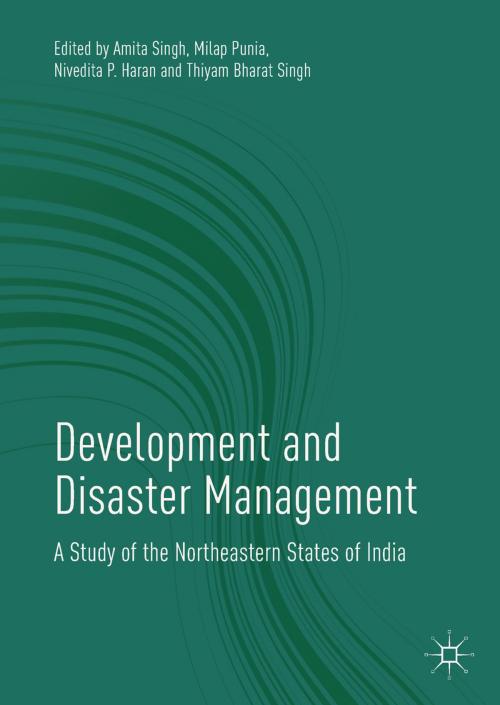Development and Disaster Management
A Study of the Northeastern States of India
Business & Finance, Economics, Urban & Regional, Nonfiction, Social & Cultural Studies, Political Science, Social Science| Author: | ISBN: | 9789811084850 | |
| Publisher: | Springer Singapore | Publication: | June 15, 2018 |
| Imprint: | Palgrave Macmillan | Language: | English |
| Author: | |
| ISBN: | 9789811084850 |
| Publisher: | Springer Singapore |
| Publication: | June 15, 2018 |
| Imprint: | Palgrave Macmillan |
| Language: | English |
This book highlights the relationship between disasters and development through a socio-cultural study of human geography and governance institutions. It studies the cause, context and consequences of disasters in one of the most fragile Himalayan regions in India. The book establishes the fact that disaster management is built within the framework of good governance, without which it has no meaning. For lack of effective and responsive governance, development has lagged behind and even though the frequency of disasters has been increasing, little is being done to redesign developmental frameworks to prevent ensuing losses. Besides, the near absence of governmental support during recurrent disasters, communities have cumulatively become reservoirs of innovations to cope up with disasters. The resilience plans need not follow implanted models but may be cost effective only if they apply a bottom up approach. Just as the region is culturally diverse so are the challenges encountered by local communities in terms of generating resilience to every disaster. Despite more than a decade of the Disaster Management Act (DMA) of 2005, most of the states in this northeastern fringe of India continue to wait for its implementation beyond mere structures and offices. The book suggests that urgent action is required in accordance with the DMA 2005 towards inter-agency coordination, proactive participation of local governance, mobilization of Community based Organizations (CBOs) and curriculum based training in every academic and technical institution. Governments of these northeastern states of India should establish accountability of State Disaster Management Authorities and inspire them to participate proactively with communities for an effective resilience building in the region.
This book highlights the relationship between disasters and development through a socio-cultural study of human geography and governance institutions. It studies the cause, context and consequences of disasters in one of the most fragile Himalayan regions in India. The book establishes the fact that disaster management is built within the framework of good governance, without which it has no meaning. For lack of effective and responsive governance, development has lagged behind and even though the frequency of disasters has been increasing, little is being done to redesign developmental frameworks to prevent ensuing losses. Besides, the near absence of governmental support during recurrent disasters, communities have cumulatively become reservoirs of innovations to cope up with disasters. The resilience plans need not follow implanted models but may be cost effective only if they apply a bottom up approach. Just as the region is culturally diverse so are the challenges encountered by local communities in terms of generating resilience to every disaster. Despite more than a decade of the Disaster Management Act (DMA) of 2005, most of the states in this northeastern fringe of India continue to wait for its implementation beyond mere structures and offices. The book suggests that urgent action is required in accordance with the DMA 2005 towards inter-agency coordination, proactive participation of local governance, mobilization of Community based Organizations (CBOs) and curriculum based training in every academic and technical institution. Governments of these northeastern states of India should establish accountability of State Disaster Management Authorities and inspire them to participate proactively with communities for an effective resilience building in the region.















